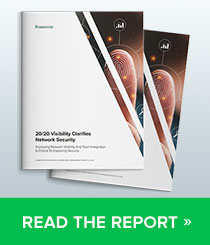As enterprises continue to embrace Zero Trust architectures, the Domain Name System (DNS) has become a pivotal control point for enforcing policy, ensuring visibility and stopping threats before they reach critical assets. Microsoft’s recent release of Zero Trust DNS (ZTDNS) for Windows 11 Enterprise and Education editions represents a major advancement in extending Zero Trust principles to the DNS layer.
At Infoblox, we are proud to complement this new capability with Infoblox Threat Defense™—our enterprise-grade, Protective DNS (PDNS) solution that delivers preemptive, intelligent and scalable DNS-layer protection. Together, ZTDNS and Threat Defense form a powerful combination that helps organizations strengthen their security posture, eliminate blind spots and stop attacks much earlier than traditional security tools.
Why Zero Trust Matters Now More Than Ever
The principles of Zero Trust are rooted in realism. Assume breach. Never trust, always verify. Enforce least privilege. Monitor constantly. Segment aggressively. These guidelines are no longer optional. They are survival tactics.
The drivers of adoption are clear:
- Infrastructure Complexity: Hybrid and multi-cloud deployments mean applications and data are everywhere. The “castle-and-moat” model no longer applies.
- Device Explosion: IoT and OT devices multiply entry points. Every sensor, printer or connected system is a potential compromise.
- Remote Work: Permanent work-from-anywhere has dissolved network perimeters. Employees log in from homes, airports and coffee shops.
- AI-Driven Threats: Just as AI accelerates business, it accelerates attackers. They are generating single-use malware at a rapid pace, finding vulnerabilities faster, hiding through cloaking techniques and laundering malicious traffic with increasing sophistication.
Against this backdrop, Zero Trust’s value is undeniable: even if attackers penetrate the network, lateral movement is restricted and blast radius minimized. But this vision collapses if DNS—the starting point of every network connection—is implicitly trusted.
What Is Zero Trust DNS?
With ZTDNS, Microsoft brings “never trust, always verify” directly to endpoint DNS resolution. Instead of relying on the system’s default resolvers or unsecured queries, ZTDNS ensures that only trusted, encrypted DNS connections—such as DNS-over-HTTPS (DoH) or DNS-over-TLS (DoT)—are used between Windows 11 clients and designated PDNS servers.
Key benefits of ZTDNS include:
- Encrypted Name Resolution: DNS queries and responses are fully encrypted, protecting users from interception or tampering.
- Enforced Trust Boundaries: Devices communicate only with IP addresses resolved through the trusted PDNS resolver. Any traffic to unapproved destinations is automatically blocked by the Windows Filtering Platform (WFP).
- Policy-Driven Control: Administrators can define and enforce DNS resolution policies that align directly with enterprise Zero Trust principles.
This approach transforms DNS from a passive service into an active enforcement mechanism, giving security teams precise control over how endpoints resolve and connect to resources.
Infoblox Threat Defense: The Ideal Trusted Resolver for ZTDNS
Threat Defense extends the capabilities of Microsoft ZTDNS by serving as an intelligent, trusted resolver that not only enforces enterprise DNS policies but also actively detects and blocks malicious activity before it impacts users or systems.
Stop Threats Earlier Than Ever Before
Threat Defense uses DNS as the earliest possible detection and enforcement point in the attack chain. By leveraging global, curated threat intelligence and advanced AI-driven analytics, Threat Defense identifies and blocks malicious domains—including command-and-control, phishing and lookalikes, and data exfiltration attempts—before connections are established, preemptively.
Our data shows that:
- Threat defense can detect emerging threats up to 68.4 days earlier than other security tools.
- 90% of domain-based threats are blocked before the first DNS query is completed.
- The system maintains an exceptionally low false-positive rate of around 0.0002%.
When combined with ZTDNS enforcement, this means that endpoints can only connect to destinations that have already been verified as safe by Infoblox’s resolver, dramatically reducing exposure to threats, including DNS-based threats.
Threat Defense not only blocks malicious activity—it also gives security and IT teams the visibility they need to understand and respond effectively. With our Security Ecosystem integrations and Security Workspace, organizations gain:
- Real-time visibility into DNS queries and blocked threats
- Rich contextual data about devices, workloads, users and threat categories
- Seamless integration with SIEM, SOAR and XDR tools for automated response
This comprehensive view helps SOC analysts quickly identify and respond to emerging threats, improving both speed and accuracy of incident response.
Consistent Protection Across Environments
In today’s hybrid work world, protection must extend beyond the corporate perimeter. Threat Defense is built for exactly that. It supports:
- On-premises networks, integrating directly with Infoblox NIOS or other internal DNS servers
- Cloud and hybrid deployments, securing virtualized and multi-cloud environments
- Roaming and nomadic users, providing consistent DNS security through cloud-based resolvers and encrypted channels
Whether users are at the office, working remotely or connecting from public networks, Infoblox ensures that the same trusted DNS resolution policies apply everywhere.
How ZTDNS and Threat Defense Work Together
When Windows 11 devices are configured to use ZTDNS with Threat Defense as their PDNS resolver, the integration works seamlessly:
- ZTDNS Enforces Trusted Resolution: All DNS queries are sent over encrypted channels (DoH/DoT) to Threat Defense.
- Threat Defense Applies Threat Intelligence and Analytics: Queries are evaluated against advanced analytics and threat intelligence. Known malicious domains are blocked instantly.
- ZTDNS Enforces Allowlist Traffic: Endpoints can only communicate with IPs resolved through Infoblox’s trusted DNS infrastructure.
- Infoblox Provides Telemetry and Visibility: Administrators can monitor resolution activity and block statistics and indicators of compromise through the Infoblox Security Workspace or integrated SIEM systems.
This dual enforcement model—ZTDNS on the endpoint and Threat Defense in the network—delivers comprehensive, layered protection that eliminates many traditional attack paths.
Conclusion
The release of Microsoft Zero Trust DNS marks an important step in bringing Zero Trust principles directly to endpoint name resolution. When combined with Threat Defense, organizations can transform DNS into a proactive, intelligent defense mechanism that stops attacks at the earliest possible stage.
Learn more about Infoblox Threat Defense and sign up for a security workshop.








